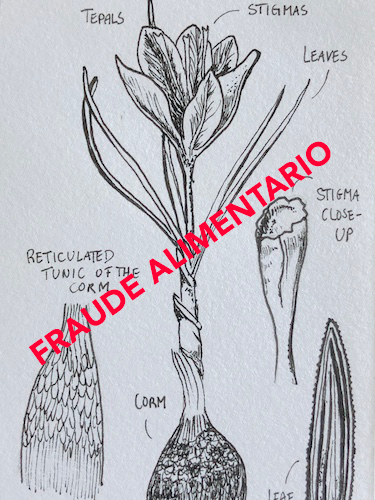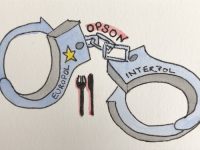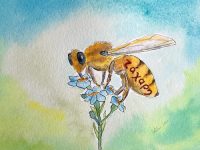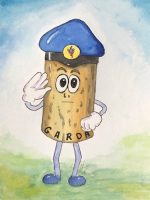2020 proved to be the most challenging year for the food industry in decades, significantly testing the resilience of food supply chains. Many of the industry’s challenges stemmed from the spread and aftermath of COVID-19, forcing food organizations to adjust in new ways to maintain their supply chain continuity, integrity and overall resilience. Yet, at the same time, the spread of the virus also exacerbated known threats that the industry has grappled with for years, such as food fraud, theft and safety issues.
A recently released report about supply chain risks identifies the trends and associated risks most likely to impact global supply chains in the year ahead, and observed that the pandemic’s longer-term effect on food supply chains is expected to result in increased threats, including fraud, theft and safety issues.1 These threats will continue to have an impact in the future, requiring wider adjustments to continuity and resilience planning.
Stockpiling, Panic Buying and the Global Rise of Food Insecurity
As we all saw in local supermarkets and grocery stores in March 2020, panic buying and stockpiling created significant disruptions to supply chains that ultimately led to empty shelves.
According to the World Bank, last year as many as 96 million additional people were pushed into food insecurity across 54 countries. This number, combined with the “137 million acutely food insecure people at the end of 2019 across these countries, brings the total to 233 million people by the end of 2020.” Coupled with COVID-19-related supply disruptions stemming from challenges around movement restrictions of people and goods as well as illness-related plant closures and availability of workers in the food sector, job losses across all industries reduced household income, which has accelearted the number of people facing increased food insecurity.
Food Fraud on a Global Scale
Unfortunately, the risk of corruption by individuals working in a supply chain correlates with the risk of food fraud. Approximately 85% of countries with a high risk of supply chain corruption also have a high risk of food fraud. This can create scenarios that criminals can exploit, most commonly by producing substandard food for distribution in that country or substituting labeled products with potentially harmful alternatives.
For example, in India, adulterated dairy products, especially domestically produced milk, were often found to be linked with fraud reports, with some reports indicating that approximately 89% of milk products had been adulterated. Countries such as India sometimes have gaps in legislation and enforcement that can reduce the ability to detect and seize fake food, making this issue one that is likely to continue post-pandemic. Our intelligence reveals that gaps in legislation and inadequate enforcement of regulations reduce the ability to detect food fraud and lead to prolonging the threat.1 At the same time, criminals continue to outpace poor regulatory regimes and grow more aware of their opportunities and advance the sophistication of their tactics.
Other forms of food fraud, in particular smuggling and disguising provenance, are common and are bound to continue in countries where the price of food continues to rise to a point where it becomes economically viable for criminals to take advantage of higher prices and smuggle it across borders. It is also possible that criminals will benefit from lower levels of enforcement, allowing other fraudulent methods, such as adulterating labels or expiration dates or using substandard or alternative ingredients, to proliferate fraud schemes around the world.
Food and Alcohol Become Top Targets for Theft and Safety Issues
The spread of COVID-19 also resulted in an increase in targeting and theft of products considered unusual for cargo theft incidents—arguably the most pronounced shift in this area in the last year. Initially, thieves began to target essential goods with a much higher frequency as the limited supplies and spikes in demand drastically increased their black-market value. Thefts of products such as PPE and food and beverages increased in frequency worldwide, overtaking the theft of historically targeted goods more, such as electronics.
The increase of food, beverage, alcohol and tobacco commodities theft can likely be attributed to their increased value as a result of panic-buying, shortages and increases in consumption, along with the ease with which they can be sold on the black market. However, the increasing value of these items has not only created a greater vulnerability for theft, but also means these commodities are at an elevated risk for counterfeiting and food safety violations.
Unfortunately, COVID-19 significantly affected governments’ capacity to enforce food safety regulations, which means that some foods may not have been checked as thoroughly. As the spread of COVID-19 reduces, government resources will likely be freed to increase food safety controls. However, further virus-related complications may reintroduce this risk.
COVID-19’s negative effects on the food industry have been pronounced, but it is worth noting that there have been areas of positive impact, too. As the industry adapted in novel ways, industry leaders developed a more holistic awareness of resilience, embracing the benefits of agile innovation, including remote auditing, and adapting their pre-pandemic ways of working to focus on meeting consumer demand.
Furthermore, organizations within the food industry learned the importance of resilience and the ability to proactively identify critical suppliers to ensure that appropriate continuity measures are in place in the event of further unplanned disruptions.
As the world begins the next phase of reopening, and many food industries remain on fragile footing due to the economic impacts of the pandemic, it will be critical that they remain aware of the changing regulatory landscape, shifting supply chains and potential disruptions to ensure they remain resilient.
Reference
- BSI. Supply Chain Risk Insights Report. (2021).














